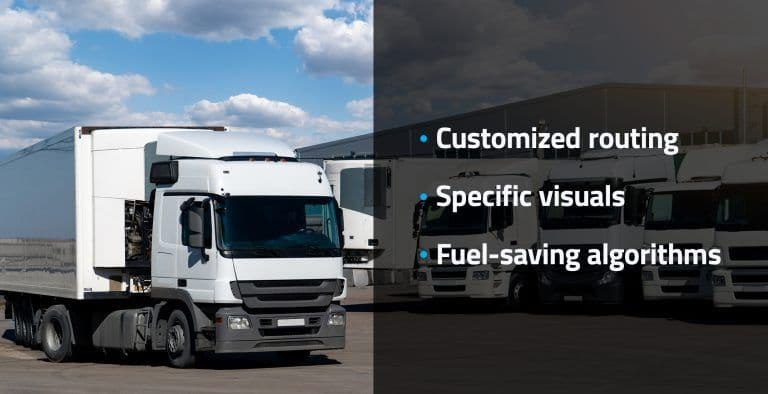Theme

3 min
On the Road Again: How Truck Navigation Software Keeps Drivers and Cargo Safe
Trucking crashes are costly, coming in at over $140,000 per incident. Combined with the soaring costs of fuel and delays in the materials needed to repair trucks and get them back on the road, it's in the best interest of transport businesses to reduce the risk of crashes wherever possible.
NNG
10 Aug, 2022
Trucking crashes are costly, coming in at over $140,000 per incident. Combined with the soaring costs of fuel and delays in the materials needed to repair trucks and get them back on the road, it’s in the best interest of transport businesses to reduce the risk of crashes wherever possible.
Crash reduction efforts are underway, thanks in part to evolving regulations around driver hours of service (HOS), with 2020 injury numbers showing a 10% decrease from 2019, but crashes remain a concern. The NNG iGO professional truck navigation platform can help companies keep drivers and cargo safe on the road, no matter where they’re going and how long they’ve been out.
Common Causes of Truck Crashes
While the exact circumstances of each crash differ, common causes include:
Lack of driver training
Improperly trained drivers make mistakes. For example, suppose truck operators aren’t trained on the key components of defensive driving. In that case, they could inadvertently cause a crash with smaller passenger vehicles, resulting in serious injury or death. And if they lack the requisite skill to plan efficient truck routes, they could find themselves stuck in urban areas that were never designed to handle large trucks.
Unrealistic expectations
If companies place unrealistic expectations on drivers to complete routes and deliver cargo, they may encourage aggressive or erratic driving, leading to serious crashes.
Driver fatigue
Tired drivers are dangerous drivers. According to the Hours of Service (HOS) established by the European Commission under Regulation (EC) No 561/2006, the daily driving period for truckers shall not exceed 9 hours, and the total weekly driving time may not exceed 56 hours. In addition, daily rest periods must be at least 11 hours, except that these breaks can be shortened to nine hours a maximum of three times per week. If companies fail to follow these rules, they could be subject to fines. For example, a law in Belgium levies fines of up to €1,800 if drivers are required to regularly take rest periods in their trucks rather than in standard accommodations.
How NNG iGO Navigation Can Help
NNG iGO can help drivers streamline trucking routes and reduce the risk of accidents with features such as:
Customized truck routing
Customized truck routing simplifies navigation. Based on user-supplied data such as truck and freight types along with dimensions such as weight, height, and number of axles, optimal routes are calculated to balance arrival times with ideal roadway conditions.
Specific map visualizations
Specific map visualizations, such as warning messages for routes, and points of interest (POIs), such as weighbridges, high flow diesel locations, and rest stops, can help drivers get where they’re going safely.
Built-in fuel-saving algorithms
Built-in fuel-saving algorithms can help drivers anticipate fuel consumption, avoid excess slopes, plan fuel stops to minimize route interruptions, and keep drivers on the road for as long as possible under HOS.

Would you like to know more?
Get in touch to learn more about our latest products and services or company news


